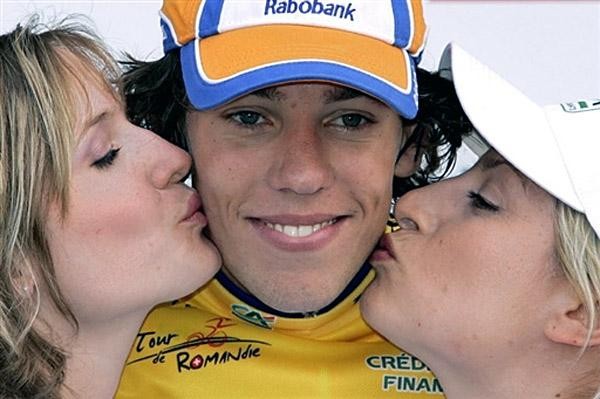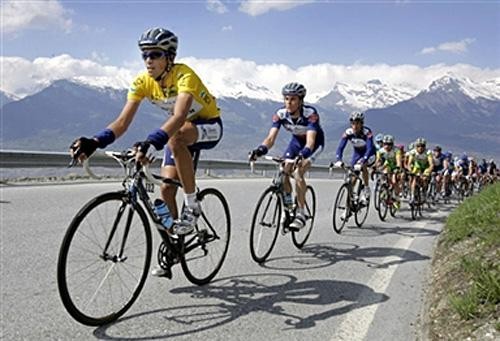Racing between the lakes in Romandie
By Bjorn Haake The 62nd Tour de Romandie will take in 659 kilometres when it makes its way from...


Mountainous course offers good Giro prep
By Bjorn Haake
The 62nd Tour de Romandie will take in 659 kilometres when it makes its way from Geneva to Lausanne between April 29 and May 4, once again serving as the final preparation for the Giro d'Italia, scheduled to start just one week after Romandie's conclusion. The parcours features a great mix of terrain, with a short, flat 1.9-kilometre prologue kicking off the Swiss race in Geneva.
The climbers will be tested right away, as the peloton will ride over 182 kilometres from Morges to Saignelegier, taking in two category two climbs as well as the category one peak in Saulcy, the final climb of the day. The highest point of the stage is the first mountain and while not terribly steep, Le Bugnenets is 1117 metres high. The decisive moment will likely come after Saulcy, when the mountain points are already awarded, but a false flat, paired with the final sprint of the day, will show who can deliver. Once the riders have really reached the top, there is another dozen of kilometres to go before the finishing banner.
The second stage goes from Moutier to Fribourg, host of the prologue last year. The altitudes of the stage are roughly between 500 and 800 metres the whole day. While there is one category one, two and three climb each, it is not quite as hard as the day before and could see a small break get clear.
The fourth stage is a time trial from Sion to Sion, which starts out pancake flat for the first seven kilometres, before gradually lifting upwards and then steepening substantially at kilometre nine. Over the course of almost three kilometres, the riders will gain 200 metres in altitude and reach the top at the 728-metre high Croisele. After that, it is almost all downhill, except a little bump a good kilometre before the finish. The total distance will be 18.8 kilometres.
The day after the time trial will see the queen stage, over 127 kilometres from Sion to Zinal, probably one of the most spectacular stages in the history of the tour. However, the riders may not enjoy the start so much. Right when the neutralisation ends the flat road does too and the peloton will have to climb to Vex (1024m) – the worst being that it's not even a ranked climb. The mountain points are given 15 kilometres later, at the 1432-metre high Saint Martin. The category one climb is followed by a high-speed descent towards the first sprint of the day, in Réchy (km 48.6). If a sprinter with climbing legs makes it to that point it is unlikely they can stay with the skinny riders over the 1332-metre high Vercorin. It is also a category one, again followed by a sprint once the bunch is back down in the valley.
Get The Leadout Newsletter
The latest race content, interviews, features, reviews and expert buying guides, direct to your inbox!
From then on, the stage turns from bad to brutal, as the riders will climb over the third category one mountain of the day. Saint Luc stands at 1543 metres, and is only followed by a short descent, before the 1585-metre high Griemenz. It is the final mountain classification point of the day, but to get to the finish the riders will still have to go up to 1677 metres, to reach the comfort of the finish in Zinal. This incredibly hard stage will not only likely bring the decision in the overall, but may have some riders re-think their ambitions for the Giro d'Italia.
The final stage isn't exactly flat, but the biggest difficulty of the day, the 1445-metre high Col de Mosse, comes early in the 154-kilometre stage. After that, the climbing isn't too hard and the run-in to Lausanne is even downhill, so a dramatic finish like last year's time trial in Lausanne may not be on order this year. When the riders see the waters of Lake Geneva again, they know they are home.
Read the complete preview, including more information about the favourites including last year's winner Thomas Dekker.